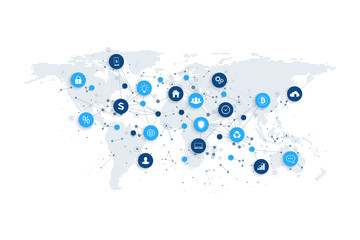Global spending on the Internet of Things (IoT) is projected to reach $745 billion this year — an increase of 15.4% over the $646 billion spent in 2018 — according to the International Data Corporation (IDC) Worldwide Semiannual Internet of Things Spending Guide.
IDC anticipates global IoT spending to sustain a double-digit yearly growth rate throughout the 2017-2022 forecast period and exceed the $1 trillion mark in 2022.
“Adoption of IoT is happening across industries, in governments, and in consumers’ daily lives. We are increasingly observing how data generated by connected devices are helping businesses run more efficiently, gain insight into business processes, and make real-time decisions. For consumers, access to data is changing how they are informed about the status of households, vehicles, and family members as well as their own health and fitness,” said Carrie MacGillivray, vice president, Internet of Things and Mobility at IDC. “The next chapter of IoT is just beginning as we see a shift from digitally enabling the physical to automating and augmenting the human experience with a connected world.”
What is digital transformation in business: Everything you need to know
The big spenders
According to IDC the industries predicted to fork out the most on IoT solutions are:
- Discrete manufacturing ($119 billion)
- Process manufacturing ($78 billion)
- Transportation ($71 billion)
- Utilities ($61 billion)
Among manufacturers, IoT spending will predominantly focus on solutions that support manufacturing operations and production asset management.
Digital transformation – What’s next for business’ biggest buzzword?
In transportation, more than half of IoT spending will go to monitoring freight and fleet management. For utilities, spending will relate to smart grids for electricity, gas, and water.
The industries that will see the fastest compound annual growth rates (CAGR) over the five-year forecast period are insurance (17.1%), federal/central government (16.1%), and healthcare (15.4%).
The United States and China will spend the most on IoT — $194 billion and $182 billion respectively. They will be followed by Japan ($65.4 billion), Germany ($35.5 billion), Korea ($25.7 billion), France ($25.6 billion), and the United Kingdom ($25.5 billion). The countries that will see the fastest IoT spending growth over the forecast period are all located in Latin America: Mexico (28.3% CAGR), Colombia (24.9% CAGR), and Chile (23.3% CAGR).
Dealing with more data
Madhavan Krishnan, VP of cloud and DevOps solutions at Virtusa, commented: “This forecast is positive for consumers set to benefit from innovation, but one notable outcome of all this IoT investment for firms is that they will be dealing with more data than ever.
Seven data trends on our radar: machine learning to IoT
“Across all sectors, companies must now urgently examine their IT infrastructure and determine whether or not it’s able to handle the incoming volume of information. To do this, firms need to be moving towards cloud analytics, deploying cloud and edge computing to strategically help them manage their reams of data. Cloud analytics enables companies to store, manage and interrogate data from the IoT while still being cost effective.
“As ever more IoT data becomes available, companies will have to shift gears towards a hybrid mode with analytics, data, and applications spread across on-premise and multi-cloud environments.”










